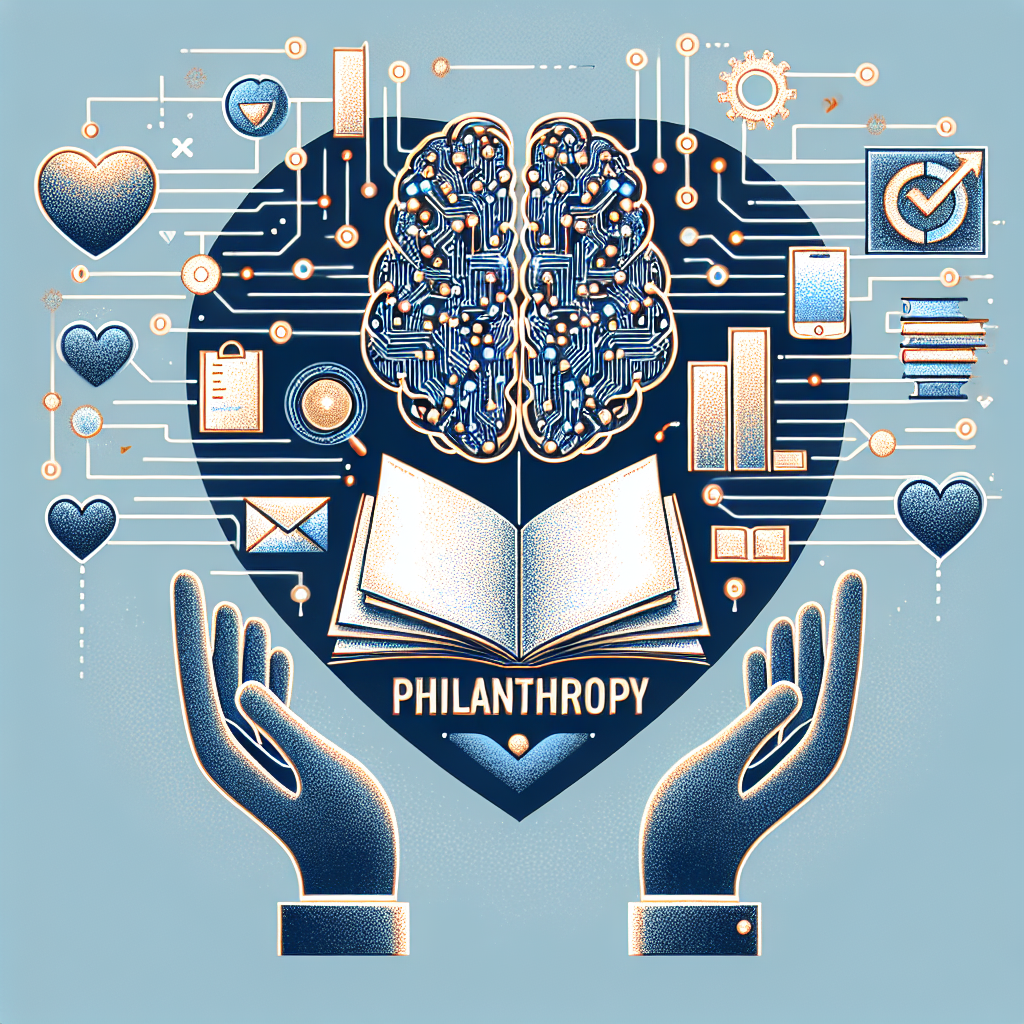In recent years, there has been a growing recognition of the disparities in education around the world. These disparities are often driven by a range of factors such as socio-economic status, geographical location, access to resources, and quality of teaching. In order to address these disparities, philanthropists and organizations are increasingly turning to artificial intelligence (AI) as a tool to improve educational outcomes for all students.
AI has the potential to revolutionize education by providing personalized and adaptive learning experiences that cater to the individual needs of each student. By analyzing data on student performance, AI can identify areas where students are struggling and provide targeted interventions to help them improve. This can help to level the playing field for students from disadvantaged backgrounds who may not have access to the same resources and support as their more privileged peers.
One of the key ways in which AI is being used to address education disparities is through the development of AI-powered tutoring systems. These systems use machine learning algorithms to analyze student data and provide personalized feedback and support to help students improve their learning outcomes. By providing students with access to high-quality tutoring support, regardless of their socio-economic background, AI has the potential to bridge the gap between privileged and disadvantaged students.
Another area where AI is making a difference in education is in the development of adaptive learning platforms. These platforms use AI algorithms to analyze student performance and tailor learning materials to meet the needs of each individual student. By providing students with personalized learning experiences, adaptive learning platforms can help to ensure that all students have access to high-quality educational resources, regardless of their background.
In addition to tutoring systems and adaptive learning platforms, AI is also being used to improve teacher training and professional development. By analyzing data on teacher performance and student outcomes, AI can identify areas where teachers may need additional support and provide targeted training to help them improve their teaching practices. This can help to ensure that all students have access to high-quality teaching, regardless of their socio-economic background.
Despite the potential of AI to address education disparities, there are also challenges and concerns that need to be addressed. One of the key challenges is ensuring that AI systems are designed and implemented in a way that is ethical and equitable. There is a risk that AI systems could perpetuate existing biases and inequalities if they are not carefully designed and monitored. It is important for philanthropists and organizations to work with experts in AI ethics and bias mitigation to ensure that AI systems are fair and inclusive.
Another challenge is ensuring that AI systems are accessible to all students, including those from disadvantaged backgrounds who may not have access to the necessary technology or internet connectivity. Philanthropists and organizations working to address education disparities through AI should prioritize efforts to bridge the digital divide and ensure that all students have access to the tools and resources they need to benefit from AI-powered educational interventions.
Despite these challenges, the potential of AI to address education disparities is significant. By providing personalized and adaptive learning experiences, AI has the potential to level the playing field for students from disadvantaged backgrounds and improve educational outcomes for all students. Philanthropists and organizations that invest in AI-powered educational interventions have the opportunity to make a real impact in closing the education gap and ensuring that all students have access to high-quality education.
FAQs:
1. What are some examples of AI-powered educational interventions that are being used to address education disparities?
– Some examples of AI-powered educational interventions include tutoring systems, adaptive learning platforms, and teacher training programs that use AI algorithms to analyze student data and provide personalized support to students and teachers.
2. How can philanthropists and organizations ensure that AI systems are designed and implemented in an ethical and equitable way?
– Philanthropists and organizations should work with experts in AI ethics and bias mitigation to ensure that AI systems are designed and implemented in a way that is fair and inclusive. This may involve conducting regular audits of AI systems to identify and address any biases or inequalities that may arise.
3. What are some of the challenges in using AI to address education disparities?
– Some of the challenges in using AI to address education disparities include ensuring that AI systems are accessible to all students, bridging the digital divide, and addressing concerns about bias and inequality in AI systems. It is important for philanthropists and organizations to work closely with experts in AI ethics and bias mitigation to address these challenges.
4. How can AI be used to improve teacher training and professional development?
– AI can be used to analyze data on teacher performance and student outcomes to identify areas where teachers may need additional support. By providing targeted training and professional development opportunities, AI can help to improve teaching practices and ensure that all students have access to high-quality teaching.
5. What are some of the potential benefits of using AI to address education disparities?
– Some of the potential benefits of using AI to address education disparities include providing personalized and adaptive learning experiences, leveling the playing field for students from disadvantaged backgrounds, and improving educational outcomes for all students. By investing in AI-powered educational interventions, philanthropists and organizations have the opportunity to make a real impact in closing the education gap and ensuring that all students have access to high-quality education.

